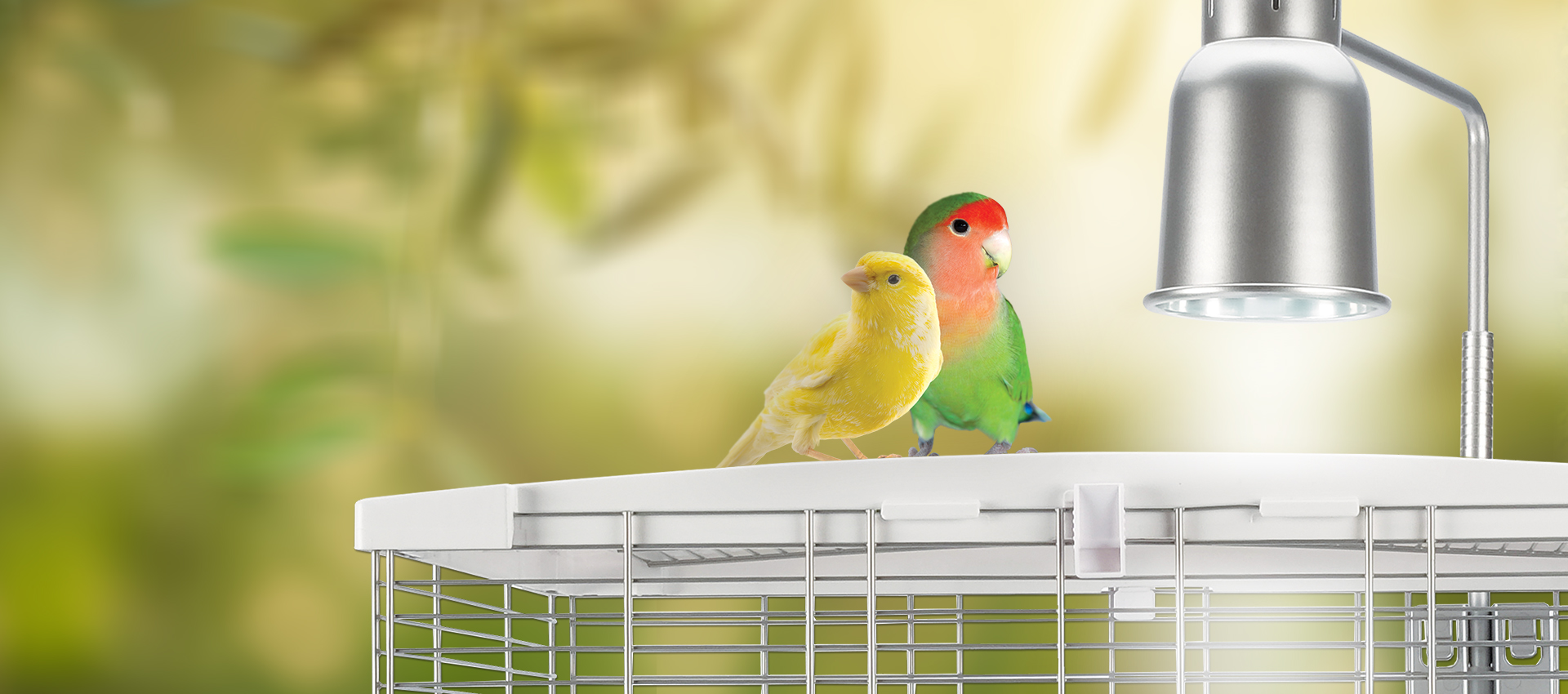Your cart is currently empty!

HARI Official Brand Site

By not providing UV light, birds are essentially colourblind to this vital light.
Humans can see millions of colours, but birds can see even more. In our eyes, humans have three types of colour receptor cells, called cones, which detect red, blue, and green. The colours we see are a combination of those three primary colours. Birds are tetrachromatic, which means they have four cones, that fourth cone lets them see in the ultraviolet part of the spectrum. Humans cannot see UV light; it is out of our visible spectrum. The colour combinations birds see are much greater with four primary colours. Humans can’t tell the difference, but birds can
.
Being able to see UV light is a vital part of how birds see and interact with the world. For years, scientists believed that birds saw the same colours as humans. Many aspects of bird behaviour were not able to be explained until it was realized that birds can see UV light. The ability to see ultraviolet light changes the way birds see many objects, even though humans cannot see those differences.
To ensure pet birds are getting enough of the sunshine they need for environmental enrichment and good health and if they have time and are home, bird owners who live in warmer climates can house their birds in an outdoor aviary throughout the day. However, for the rest, most companion bird owners will still need to substitute natural sunlight by using UV lighting. Because window glass filters out ultraviolet rays, having pet birds near a window is not enough.
It turns out that many bird species that appear sexually monochromatic to humans (males and females looking identical), look very different in UV light. Birds can use those UV markings to help select mates or tell individual birds apart. Having UV vision may also serve as a useful indicator of the health of a mate. In this research article, Quantifying avian sexual dichromatism: a comparison of methods, it is noted that “several cases of ‘hidden’ UV dichromatism have also been discovered, in which the sexes are monochromatic in the human-visible portion of the spectrum, but dichromatic in the UV-region, such that the sexes appear identical to humans but different to the birds themselves. UV reflectance is important for mate choice and mating success in several species of birds, such as the zebra finch, bluethroat and blue tit.”

Ultraviolet Signaling in the Rainbow Lorikeet – UV Vision in Birds
Video source: YouTube: @OrnithopterZone1
It’s not just bird feathers that appear different in ultraviolet light, many things reflect UV light, but humans just can’t see it. For example, the high phosphorus in urine makes it glow vividly in ultraviolet which allows birds of prey to track and detect small prey such as mice. Some fruits have coatings that also reflect UV light, making them stand out vibrantly making foraging much easier. Some insects and flowers also reflect UV light, giving birds a clear advantage in finding those food sources.
Vitamin D is a fat-soluble vitamin that is essential for the regulation of calcium and phosphorus in the body.
Birds excrete a “preen oil” that contains a precursor of vitamin D; this precursor is converted into vitamin D3. In the wild, most birds synthesize their Vitamin D3 from the UVB component of sunlight. Pet birds that are housed in outdoor flights or aviaries that get exposure to natural sunlight are rarely Vitamin D deficient. Birds that are kept indoors with little natural sunlight and/or fed a seed-only or plant-based diet may require added vitamin D3. Vitamin D can only be absorbed when there is enough fat in the diet. When birds are fed on a diet of 70% extruded formula and 30% enrichment foods, they often get the right amounts of vitamin D3. Vitamin D3 can also be given in powdered form to birds on a mostly seed or plant-based diet. Supplements such as PRIME can be added to moistened vegetables or soft foods such as eggs or fruits. Using a UVA/UVB avian light to mimic natural sunlight in addition to supplementing with a vitamin such as PRIME can facilitate the assimilation of vitamin D3 for optimum calcium absorption.
Bird lighting can be safe and effective, but it is only as effective as the nutritional diet that is provided to the bird. A well-balanced diet will allow the bird to absorb the minerals that it needs and the UVB system will allow the bird to assimilate what is offered as food. It’s also crucial to mention that it is essential that pet birds are always very well-hydrated. A lack of hydration has a hugely detrimental effect on the vital organs themselves. It’s always best to consult with your avian veterinarian to determine if you feel that your bird needs further vitamin D3 supplementation.
When birds don’t get enough exposure to UV light, problems such as feather plucking, and mood swings can also impair their wellbeing. All by itself, UV light won’t cure a bird of behavioural or health issues, but it can certainly help in combination with other factors, including nutrition and training. If a bird is exhibiting hormonal behaviours, biting, and aggression, an Avian Light combined with the right diet and plenty of exercise will help a bird feel and look better. It can take some time to fully see the benefits of using UV light, but one must always use caution and a little common sense.
It’s important for bird owners to understand that over-exposure to UV light (over eight to twelve hours a day – this includes mixing natural sunlight and indoor lights) can trigger hormones which may cause chronic egg-laying or hormonal behaviour problems like aggression (the very thing we are trying to avoid). Unless you’re a breeder, somewhere between seven to nine hours of UV exposure should be enough for a pet bird, including natural sunlight from the bird’s environment.
Companion birds should get 10-12 hours of dark sleep. Dark means no television, noise, or visible light in the background (for birds that have a history of night fright or night thrashing, a low light night light is recommended). Having a daytime cage and a nighttime cage in different locations in the house is often a good idea. When a bird gets less than 10-12 hours of sleep or if sleep is interrupted, the bird can become quite irritable. They are more prone to feather-damaging behaviour (feather plucking) and other undesirable behaviours that can lead to health issues possibly leading to territoriality and aggressive behaviours or chronic egg laying. A shorter sleep cycle or one that involves more light is often used for breeding.
A note on possibly the most important reason for you to re-assess the ways you illuminate your bird and its environment. Small changes in your bird’s appearance or behavior, cage damage, a dirty cage, and many other problems are easily missed in a dimly lit environment. Some changes are very subtle; an oddly colored dropping, a leg that does not grip the perch well, or an out-of -position wing are all conditions that need a little “enlightenment” to pick up!
– Louise Bauck, DVM, MVSc

By Louise Bauck, DVM, MVSc